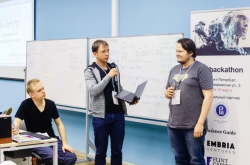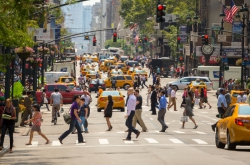One of the ways of managing autonomous vehicles is a centralized model. For example, when it is necessary to decide who will cross an intersection first, vehicles send signals to a control unit, which analyzes the position of each vehicle and then manages their passage by making the first vehicle stop, the second gather speed and the third continue its passage without changing speed. Such a device as traffic signals is an example of this control model.
However, this method has some disadvantages, think the residents of the Future Technologies. They gave reasons for that and offered a new type of control system in the article "Multiagent planning of intersection passage by autonomous vehicles." Centralized management systems need much time to make a decision in case of increasing the amount of vehicles. Furthermore, the safety of vehicles passing through the intersection depends on the control center completely. It means that one has to provide redundancy. Otherwise any hacker attack will be able to wreck the unit and cause an accident.

Photo credit: pikabu.ru
Following a decentralized control strategy, it is possible to eliminate some disadvantages. It makes vehicles self-regulated instead being totally controlled by the unit. Using specific algorithms, self-driving cars "agree" on how they pass the intersection, taking into account how to do that within the shortest possible time and yet also keep themselves into a speed limit. Thanks to this system, it will be possible to speed up the traffic, as well.
Thanks to the decentralized system, vehicles don’t have to use maps. To follow directions, they use cameras that can recognize road markings and other navigation signs. As of now, this method is developed by only several labs in the world. One of them is MIT’s Computer Science and Artificial Intelligence Lab. Its engineers created Duckietown, a robotics class with "a fleet of 50 duckie-adorned self-driving taxis that can navigate the roads."
Ilya Vasin, one of the authors of the article and tutor at the Department of Secure Information Technologies, explains how the new system works with the following example: "Decentralized management is when several people who want to cross the intersection, discuss who crosses first, and who the next before to start moving."
Ilya Vasin and other members of his team will present their project at the DEMO-Day initiated by Future Technologies accelerator. The engineers will talk about how to apply this system to warehouse services. The advantage of this system is that when working at a warehouse, vehicles can be always connected to wi-fi. It is also very easy to control the vehicles' operation. The robots will use QR-codes labeled on boxes to get the information about where to put them.




